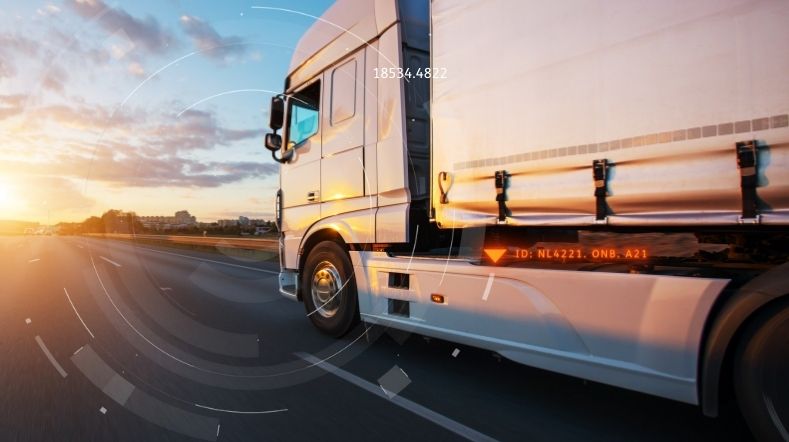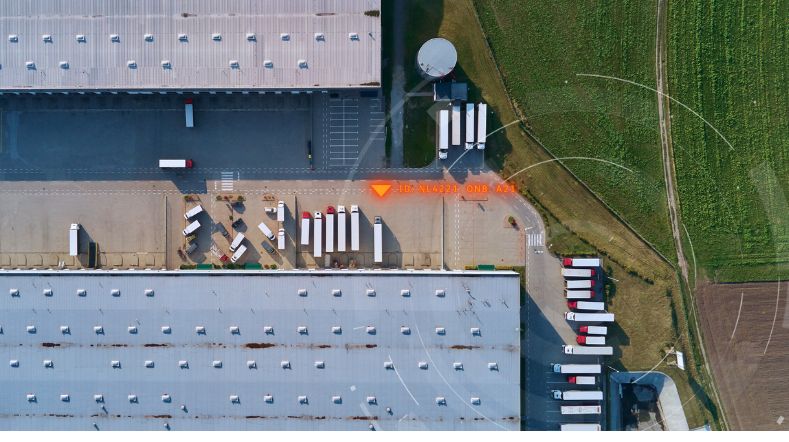
Close collaboration and learning by doing is the way forward in Connected Automated Transport
Connected Automated Transport (CAT) promises safer, cleaner, more efficient, and reliable logistics. A recent networking event on automated logistics, organised by Connekt and TNO, highlighted the growing demand for collaborative action, on-road testing, and a learning-by-doing approach in logistics operations to advance this field.
Global logistics faces significant challenges in the coming years. Increased cargo volumes and a shortage of truck drivers make it harder to meet demand. Strict emission regulations require investments in cleaner equipment, while growing congestion and international crises threaten shipping reliability.
Connected Automated Transport (CAT) offers substantial societal and economic benefits by making logistics safer, more sustainable, efficient, reliable, and potentially more profitable. Connekt, an independent network for smart mobility and sustainable logistics, organised a networking event on CAT in collaboration with TNO.
‘It’s a marathon, not a sprint’
The event was kicked off by Jaco van Meijeren, Senior Business Consultant Logistics, with a presentation on the challenges and opportunities of CAT in the Netherlands. 'At TNO, we've been studying Connected Automated Transport for some time and gained insights through projects like the Catalyst living lab. One key lesson is that while stakeholders want to move quickly, realistically, progress will be slow. The road to CAT is a marathon, not a sprint. Projects often fail due to overly complex Operational Design Domains (ODDs). TNO identifies four steps with increasing complexity, from on-site logistics on private grounds to regional and long-haul transport on public roads. We advise starting with modest ODDs.'
Another potential pitfall for CAT is a focus on vehicle technology only. 'While technology should be safe and reliable, logistics companies have many questions about other crucial aspects. What does the digital infrastructure look like? How do we integrate automated vehicles into our logistics processes? Who will provide and operate the control tower? What are the risks and responsibilities in case of accidents? Often, we don't have these answers, leading logistics partners to wait for solutions and OEMs to lack market incentives. To break this lock-in, we need to investigate integrated solutions and address all stakeholder questions on CAT systems' essential building blocks.'
‘We need a large-scale integrated showcase’
To find these answers, TNO is working on three CAT projects. MAGPIE is a European Green Deal project in collaboration with DAF to develop Level 4 autonomous truck technology, with a demonstration planned for this fall. The European MODI project focuses on the implementation process of L4 trucks in logistics operations, addressing some crucial building blocks. The new project CAT4Yards will investigate CAT deployment in three different use-cases in the Netherlands, including short-distance deployment on public roads between terminals.
Jaco van Meijeren comments, 'MAGPIE and MODI are small-scale but important demos. We need to progress towards demos of increasing complexity, embedded in the logistics chain. Ideally, we would have a large-scale showcase to test all building blocks integrally over a longer period. However, we are not there yet. To avoid falling behind in global logistics and retain economic opportunities for the Netherlands as a logistics innovator, we must take steps in the admission and type approval process to anticipate future developments.'
Promising use-cases
The topic of on-road testing was also addressed in the Einride case, presented by Head of Commercial, Rickard Mårtensson. The Swedish company, a leading provider of digital, electric, and autonomous shipping technology, serves clients in Europe and the US. Einride’s connected electric trucks and charging solutions allow shippers and carriers to go fully electric now and autonomous in the future.
Einride foresees a gradual implementation, starting with nearby deliveries at 30 km/h, then progressing to rural, suburban highway, and finally city deployment. Swedish legislation permits limited on-road testing of autonomous trucks, and first night-time tests have been conducted on public roads. Einride plans a factory-to-warehouse pilot for a large Dutch logistics partner, including short stretches of public road.
Another promising case was presented by DFDS on its Autonomous Terminal Tractor used in port operations. A driverless terminal tractor, jointly developed by EasyMile and Terberg Special Vehicles, has been successfully deployed at DFDS' terminal in Vlaardingen. Over eight weeks, the tractor was tested in three different ODDs, from moving a trailer to loading it onto a vessel.
‘It will happen’
An important stakeholder for the future of connected and automated logistics, and a key location for CAT experiments like MAGPIE and MODI, is the Port of Rotterdam. As Europe’s largest port, covering more than 12,600 hectares, it handles around 15 million TEU containers annually, with an expected rise to 23 million by 2035. Bob Dodemont, Program Manager Smart Mobility & Logistics at Port of Rotterdam, emphasises the importance of CAT for efficient, safe, and sustainable container exchange. “Many of our customers are working for example on CAT, so we must be prepared. We are a landlord, road authority and Port developer, working on future-proof infrastructure. We see opportunities for automated transport on terminals, client premises, last-mile applications on public roads, and short tracks between distribution centers, as well as for the personal mobility of our 500,000 employees.”
Close collaboration is key
To Dodemont, it’s about thinking big and acting small—starting on private terrain, then on the recently launched Container Exchange Route (CER), and eventually on public roads to other logistical hubs like Distripark, Waalhaven, and Venlo. The Port of Rotterdam is facilitating a pilot at QTerminals with Autonomous Terminal Tractors on the CER route, including initial experiments in mixed traffic.
Bob Dodemont reflects positively on the Connekt event: 'I noticed strong drive, good ideas, and great energy to advance CAT. We need intense, professional collaboration among all stakeholders, similar to the successful SMASH! program for autonomous shipping. Perhaps an independent party with knowledge and authority like TNO or Connekt should take the lead in coordination.'
Keep an open dialogue
Legislation for CAT to enable on-road testing and clarity on future deployment policies were recurring topics during the event. Anouk van der Laan, Senior Policy Officer Smart Mobility at IenW, provided insights into the current policy situation. 'As stated in the letter to the Tweede Kamer, the Dutch national government firmly believes in the benefits of Intelligent Transport Systems (ITS), including CAT. Our focus is on the safe and responsible introduction of automated transport solutions. We are working hard on the necessary policies and regulations for short-term testing and future full deployment of CAT. We encourage collaboration and idea exchange between the market and government to better understand the needs and requirements of different stakeholders. I found that really valuable and hope we can maintain that open dialogue after today.'
Trial and error
The event concluded with a group discussion led by Joost van Gils of Heijmans and Bastiaan Krosse, Research Manager Integrated Vehicle Safety at TNO. His final thoughts? 'Today, we learned that all stakeholders see the societal benefits and potential business case of CAT, but we struggle to get started and take the right steps. Other countries have made significant progress in dialogue with authorities. Parallel to the legislative process, we should create an environment for practical experiments, open discussions, and sharing insights on best practices. Additionally, having a government perspective—a clear goal on the road to implementation—would be ideal. IenW is open to a dialogue on legislation, an opportunity we must seize. Bob Dodemont highlighted in his presentation the importance of ‘Brilliant Failures'; we need to make mistakes and learn from them together. Trial and error based on real use cases, under agreed conditions amongst the relevant stakeholders, with safety as a prominent concern, is the way forward.'
Get inspired
Getting on board with autonomous transport? Five things you need to know


Automated logistics



